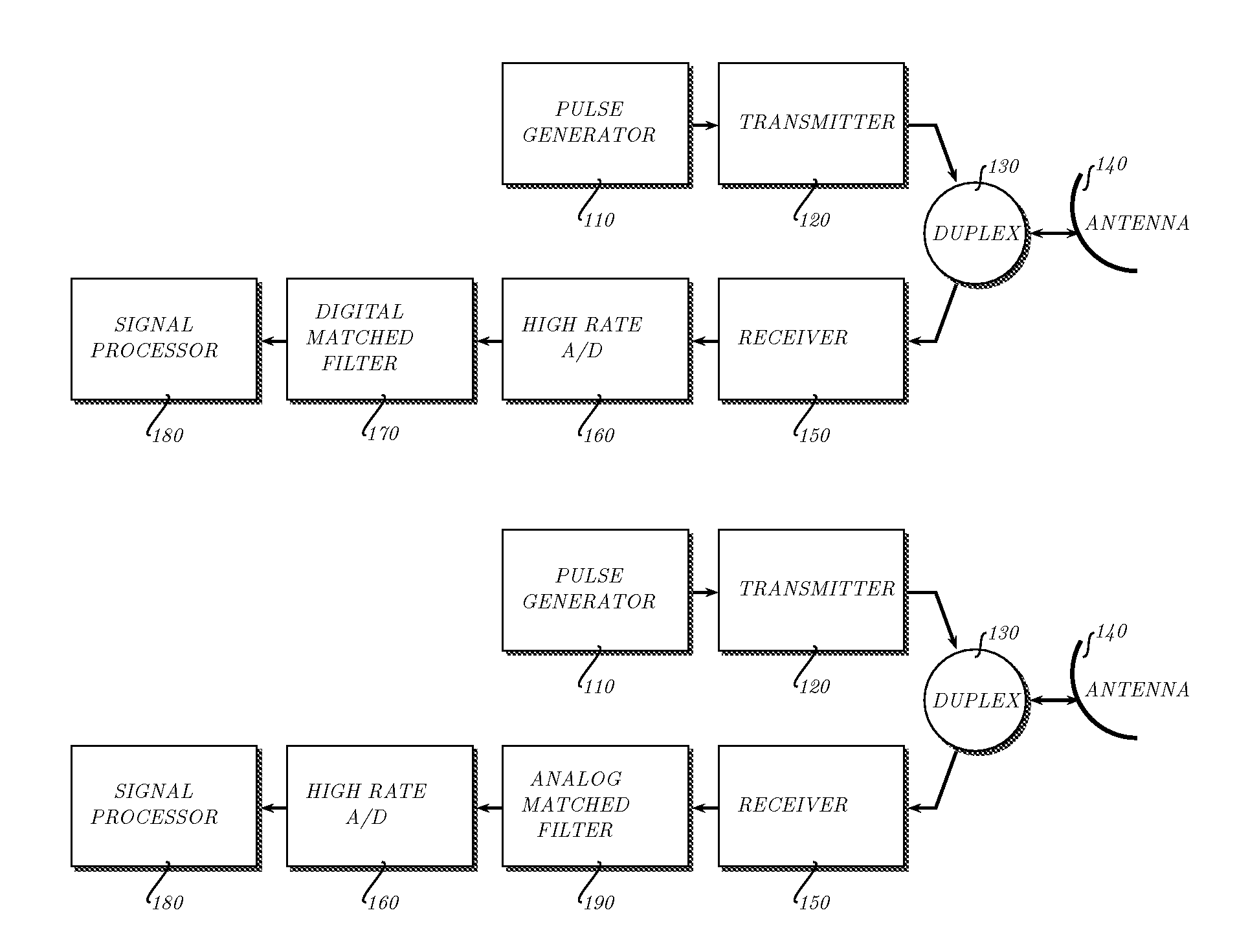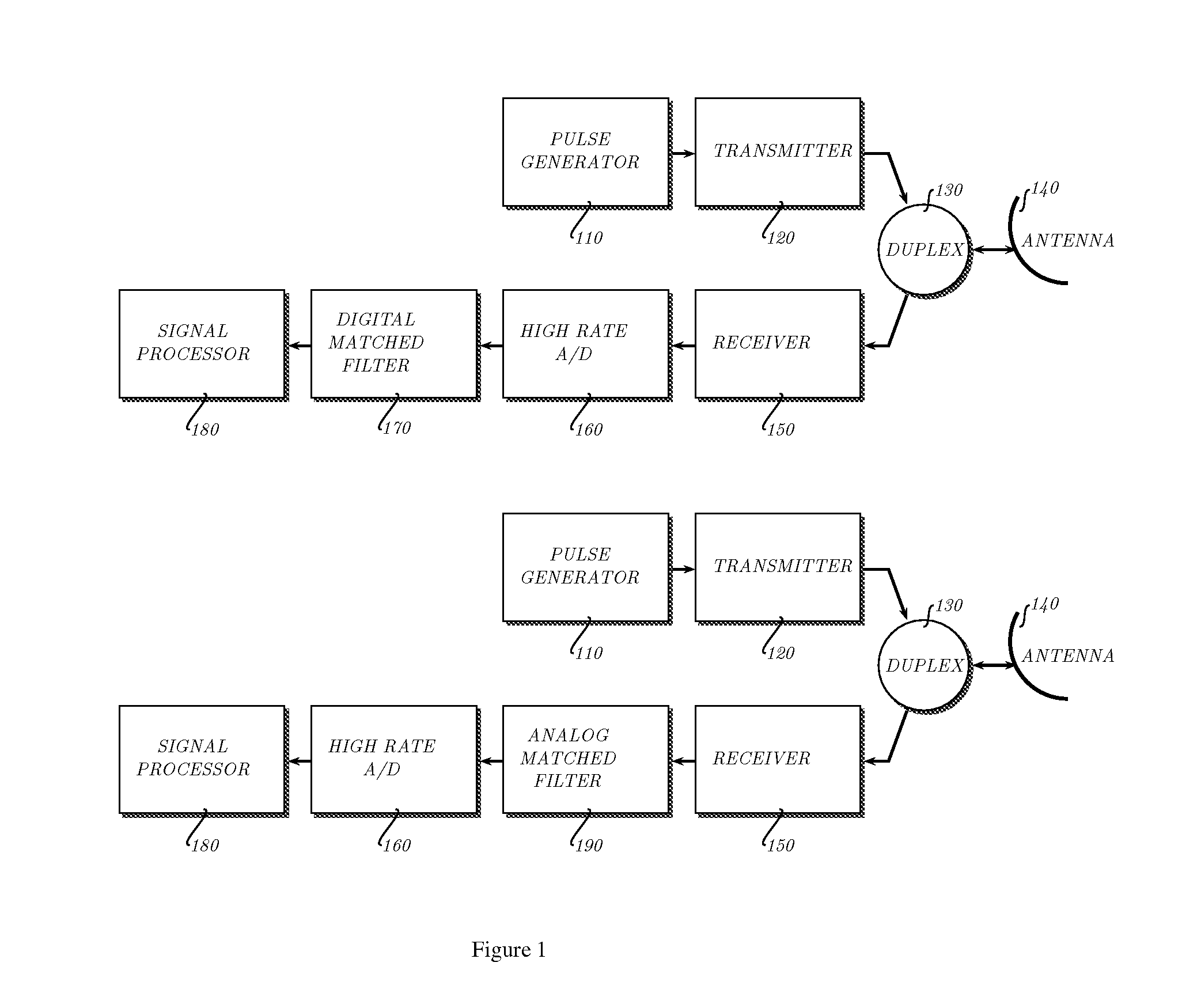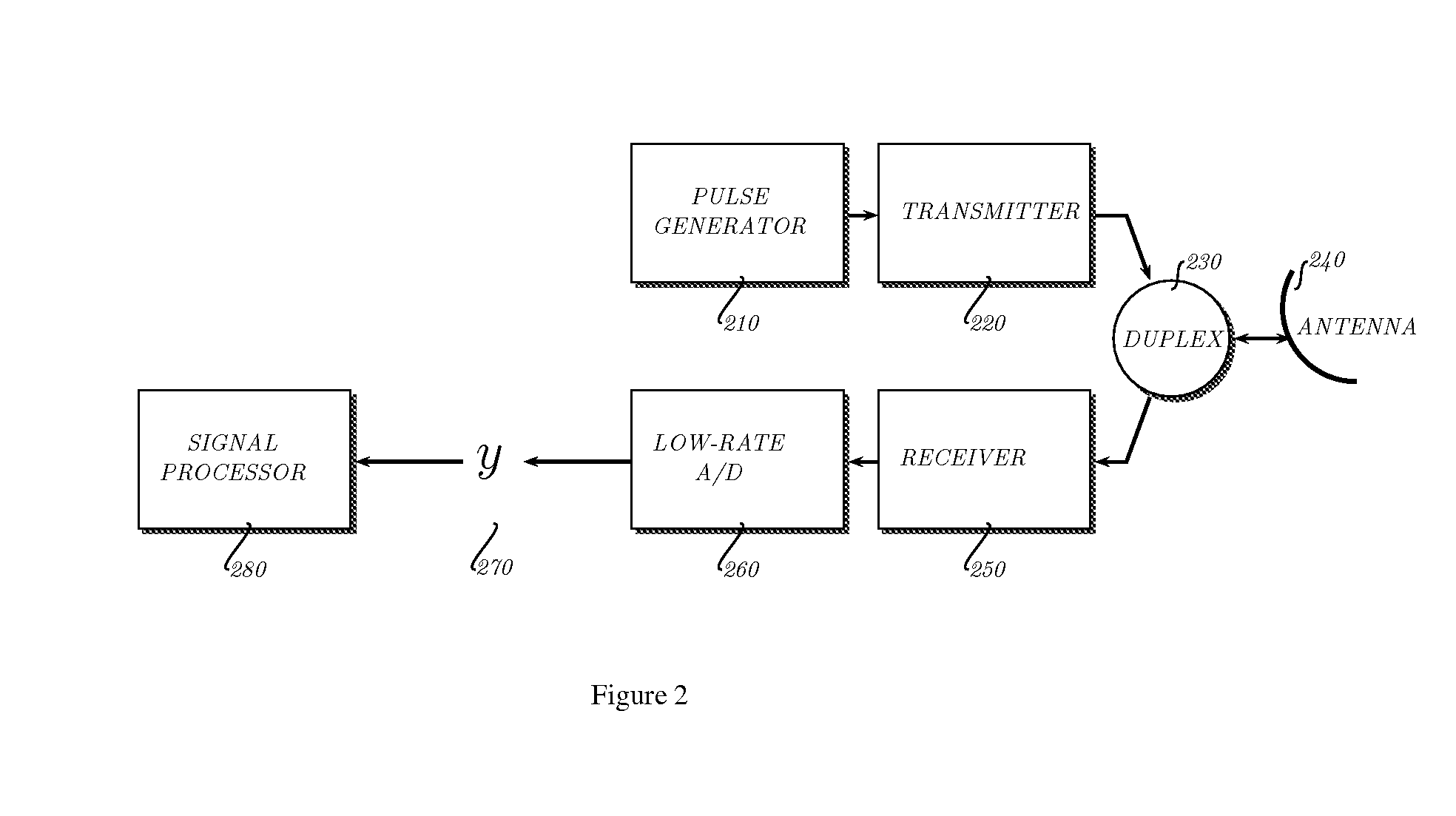Apparatus and Method for Compressive Sensing Radar Imaging
a compressive sensing and radar imaging technology, applied in the field of radar systems, can solve the problems of imposing limitations on the resolution of radar systems, short duration pulses are very difficult to implement,
- Summary
- Abstract
- Description
- Claims
- Application Information
AI Technical Summary
Problems solved by technology
Method used
Image
Examples
example 1
Range Profile Acquisition
[0056]In a first example we illustrate our method with a simulation of radar range profile acquisition. A radar reflectivity profile 310 is shown in FIG. 3a. The reflectivity profile consists of a blocky background signal and a few strong point scatterers. We convolve this reflectivity sequence with a transmitted radar PN wave sequence sT(t) 320 and obtain a received wave sequence y 330 (see FIG. 2, 270). Following the analysis of the radar reflection process that was given above, this signal interacts with the target reflectivity in the form of a convolution; thus the signal arriving at the receive antenna is of the form sR(t)=sT(t)*u(t) (this is the same as a classical radar system; we use “*” to denote convolution). Now we observe that if we eliminate the matched filter (convolution with sT(t)) after the receive antenna, then we can regard the non-matched-filtered received signal sR(t) sT(t)*u(t) as a “random filtered” version of the desired signal u(t). ...
example 2
Synthetic Aperture Radar Image Acquisition
[0059]FIG. 5a shows a 2-D radar reflectivity profile 510 that we for our simple simulation of a Synthetic Aperture Radar (SAR) scene acquisition. The SAR data acquisition was simulated using a forward model for the SAR imaging process, that is described in M. Cetin, “Feature-Enhanced Synthetic Aperture Radar Imaging”, PhD Thesis, Boston University, College of Engineering, 2001. FIG. 5b shows the measurement matrix Φ520 consisting of M=N / 2 rows with the transmitted PN wave sequence. The Compressive Sensing recovery of the SAR scene 530 with two times undersampling is exact. An OMP algorithm using a combination of a time-sparse (identity) and Haar wavelet basis as the sparsity basis Ψ was used for the recovery of the SAR scene. The traditional SAR image 540 of FIG. 5d shows artifacts of the limited aperture of the imaging operator, which are absent in the image that was obtained with Compressive Sensing techniques. The result shown here is sim...
PUM
 Login to View More
Login to View More Abstract
Description
Claims
Application Information
 Login to View More
Login to View More - R&D
- Intellectual Property
- Life Sciences
- Materials
- Tech Scout
- Unparalleled Data Quality
- Higher Quality Content
- 60% Fewer Hallucinations
Browse by: Latest US Patents, China's latest patents, Technical Efficacy Thesaurus, Application Domain, Technology Topic, Popular Technical Reports.
© 2025 PatSnap. All rights reserved.Legal|Privacy policy|Modern Slavery Act Transparency Statement|Sitemap|About US| Contact US: help@patsnap.com



